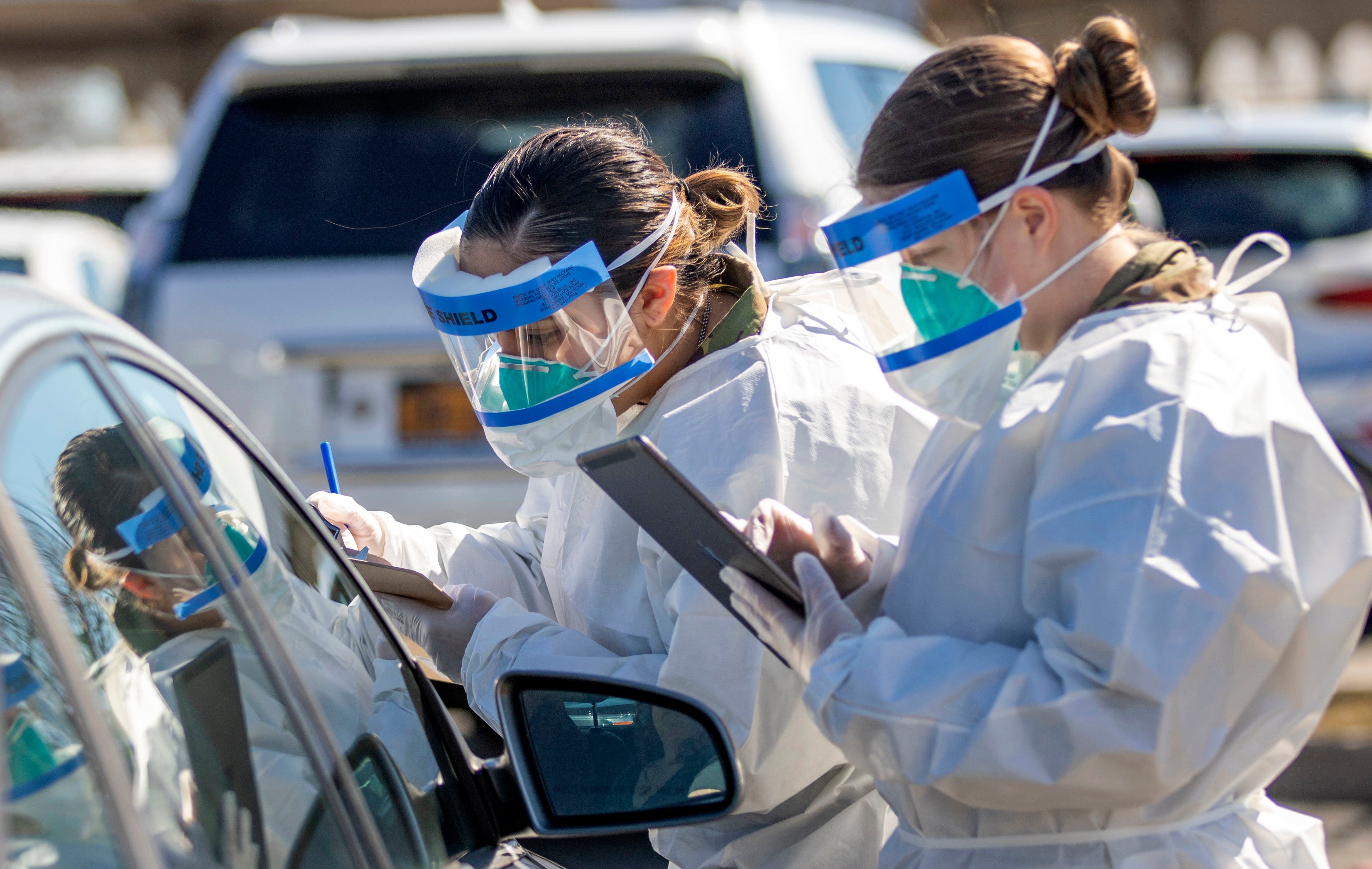The Defense Department has placed hundreds of medical personnel on alert and ordered the deployment of two hospital ships to help public health agencies shore up their capacity as the coronavirus pandemic threatens to overwhelm community hospitals.
In addition to sending the USNS Mercy and Comfort to pandemic hotspots, active duty troops could help staff up to 1,000 beds’ worth of field hospitals around the country, the Joint Staff surgeon told reporters Wednesday, in response to requests from civilian public health agencies.
“We did not put reserve units on alert at this time because we’re sensitive to the competing demand,” Brig. Gen. Paul Friedrichs said, after several days of discussions over whether to activate National Guard and service Reserve medical troops, who often work as doctors, nurses and other community medical professional roles in their civilian careers.
Meanwhile, the Naval Station Norfolk, Virginia-based Comfort will be pulled out of its current maintenance period to head up to New York, while the San Diego-based Mercy’s destination hasn’t been determined, Pentagon spokesman Jonathan Hoffman told reporters.
“Our understanding is that the ships will be used to take non-coronavirus patients which, is what our staff is best organized to do,” Friedrichs said.
Hospital ships are designed to care for combat casualties, so while they are able to support about 1,000 patients and have a dozen or so operating rooms on-board, their close quarters are not conducive to stemming the spread of a highly contagious virus.
Thousands of National Guard troops have been activated across more than a dozen states in the past week, though not necessarily medical units, and tasked with running mobile testing centers and compiling care packages to deliver to vulnerable residents, for example.
Any field hospitals set by up military units have a similar capability.
“These are all designed for combat casualty care, for taking care of deployed units,” Friedrichs said.
If deployed, they would be used to care for non-intensive care unit patients who are already in hospitals, or do divert new, non-critical patients from being admitted into a brick-and-mortar hospital.
“I don’t think we know at this point,” Hoffman said of how the mix of military assets will be used. “We’re eager to hear the exact requirement and see what it is.”
Meghann Myers is the Pentagon bureau chief at Military Times. She covers operations, policy, personnel, leadership and other issues affecting service members.




